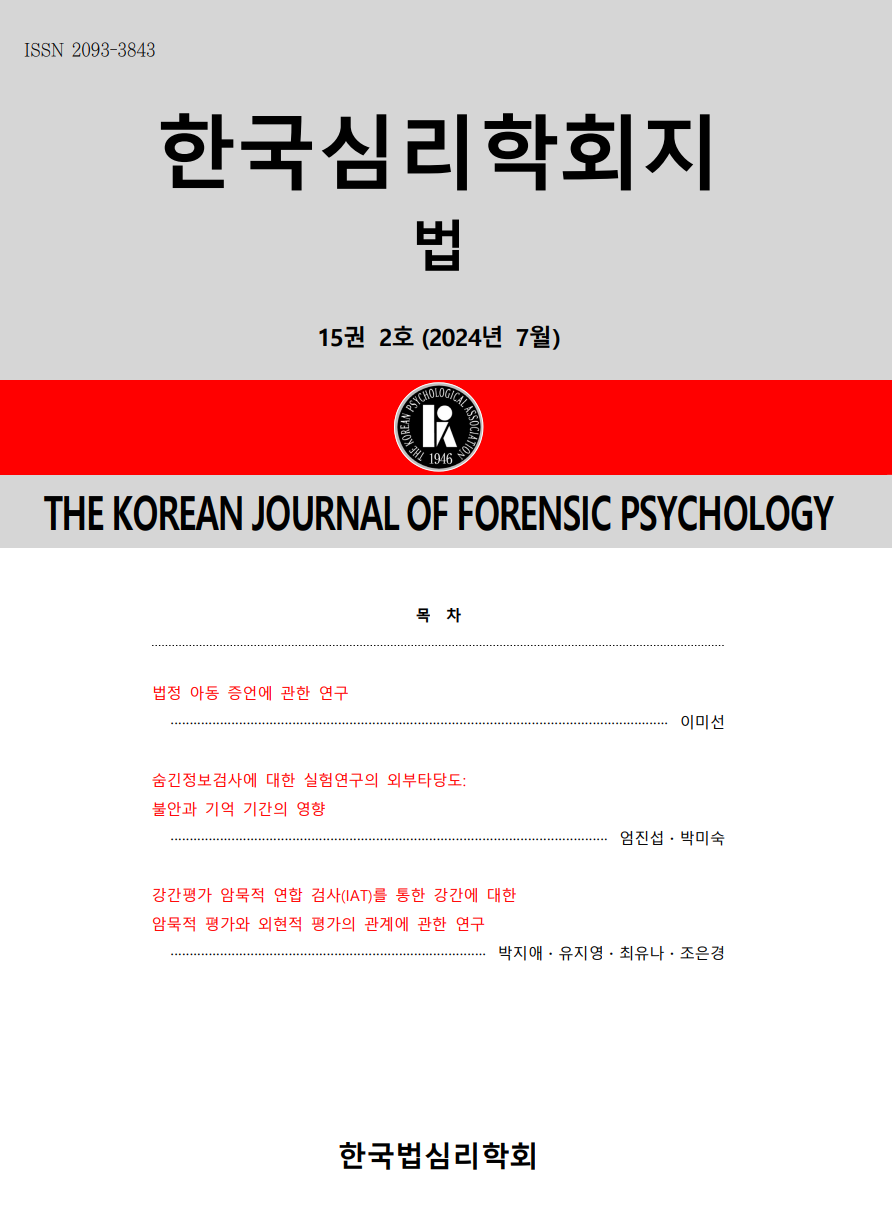open access
메뉴
open access
메뉴 ISSN : 2093-3843
ISSN : 2093-3843
Pre-Interrogation notification of suspect rights refers the provisions on right to refuse to make statement and assistance from attorneys before the interrogation of a suspect. This study investigate the effects of contents and methods of pre-interrogation rights notification on understanding of the suspect’s rights. Study 1 examined the words and concepts in the current notification of suspects rights with 31 college students and found that their understanding was low in terms including “whole statements”, “Assistance from attorneys” ect. Study 2 presented one of six conditions of different content(current notificiation/ reivised notificiation) and methods (oral/written/both) of pre-interrogation notification of suspect rights to 157 participants aged 19 or older and assessed their understanding of suspect rights. The current notification was the rights notification itself used in the investation and interview of suptes in the current legislation. The revised notification added explanations about legal terms of the current Criminal Orocedre Code and rivised them in easier expression based on the findings of Study 1. The results show that participants had a significantly higher understading of suspects rights when provided with the revised notification than the current one. There wrer on siginficant differences in their understadning of suspects rights before interrogations aorcding to the mthods of presenting.
강병훈 (2009). 변호인의 조력을 받을 권리. 형사소송이론과 실무, 201-230
김민지, 피세영 (2014). 한국형 피의자 권리 고지문에 대한 이해도 평가. 한국심리학회지: 사회 및 성격, 28(4), 23-46.
김상훈, 박노섭 (2015). 범죄피해자에 대한권리고지 방식과 이해도에 관한 실증적연구 - 가정폭력을 중심으로. 경찰법연구, 13(1), 117-141.
신동운 (2014). 신형사소송법찰법 제5판. 서울:법문사.
이영돈 (2014). 변호인의 피의자신문 참여권의범위와 한계. 법학논고, 47, 261-282.
조국 (1997). 미란다 규칙의 실천적 함의에대한 소고: 미국 연방대법원의 입장변화를 중심으로. 형사법연구, 제10권, 409-427.
차준호 (2006). 국내 피의자 권리 고지 실태 및 일반 청소년과 소년범의 피의자 고지 이해도에 관한 연구. 한림대학교 석사학위논문.
Grisso, T. (1981). Juvenile’s waiver of right: Legal and psychological competence. New York: Plenum Press.
Grisso, T. (1998). Assessing understanding and appreciation of Miranda rights: Manual and materials. Sarasota, FL: Professional Resources.
Goldstein, N. E. S., Zelle, H., & Grisso, T. (2014). Miranda Rights Comprehension Instruments (MRCITM). Professional Resource Press.
Goldstein, N. E. S., Zelle, H., & Grisso, T. (2011). Miranda Rights Comprehension Instruments (MRCI) Manual. Professional Resource Press.
Hughes, M., Bain, S. A., Gilchrist, E., & Boyle, J. (2013). Does providing a written version of the police caution improve comprehension in the general population?. Psychology, Crime &Law, 19(7), 549-564.
Montali, J., & Lewandowski, L. (1996). Bimodal reading: Benefits of a talking computer for average and less skilled readers. Journal of learning disabilities, 29(3), 271-279.
Rogers, R., Rogstad, J. E., Gillard, N. D., Drogin, E. Y., Blackwood, H. L., & Shuman, D. W. (2010). “EVERYONE KNOWS THEIR MIRANDA RIGHTS”: Implicit Assumptions and Countervailing Evidence. Psychology, Public Policy, and Law, 16(3), 300-318.
Wrightsman, L. S., & Pitman, M. L. (2010). The Miranda ruling: Its past, present, and future. Oxford University Press.